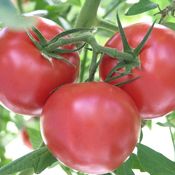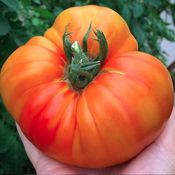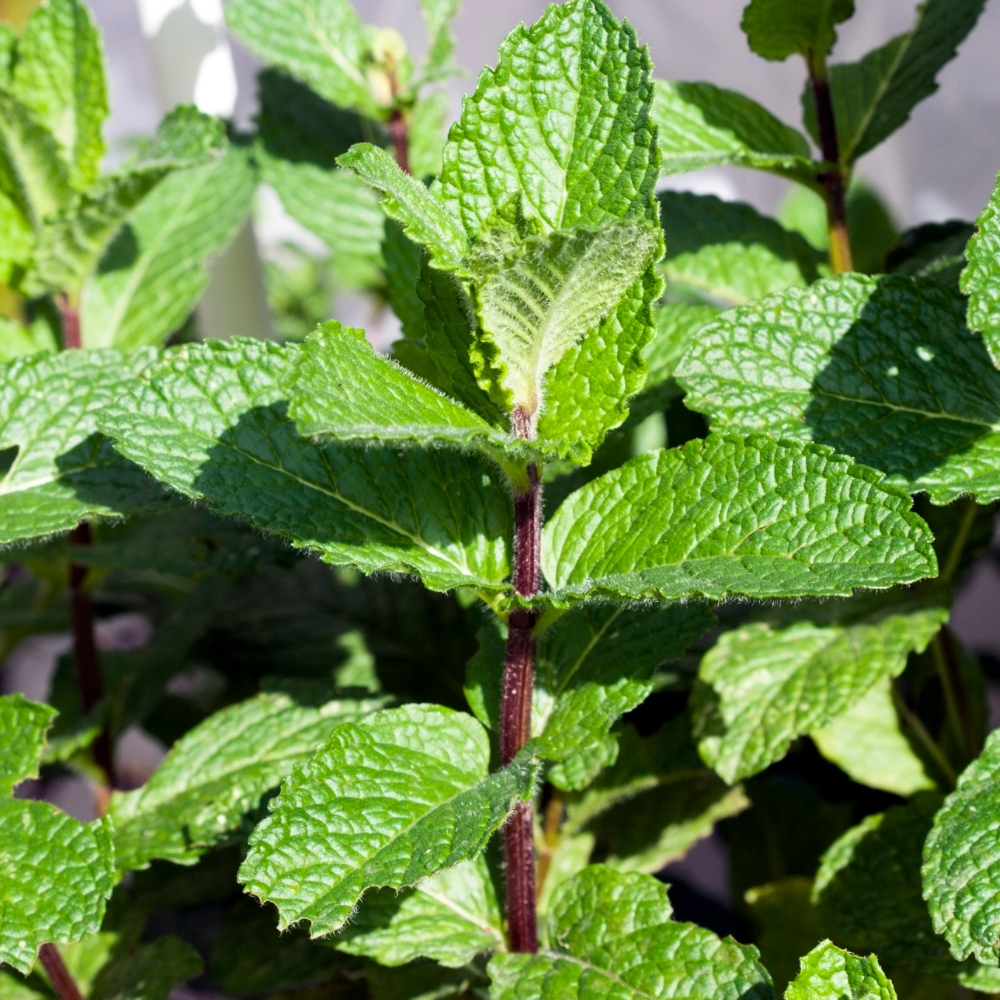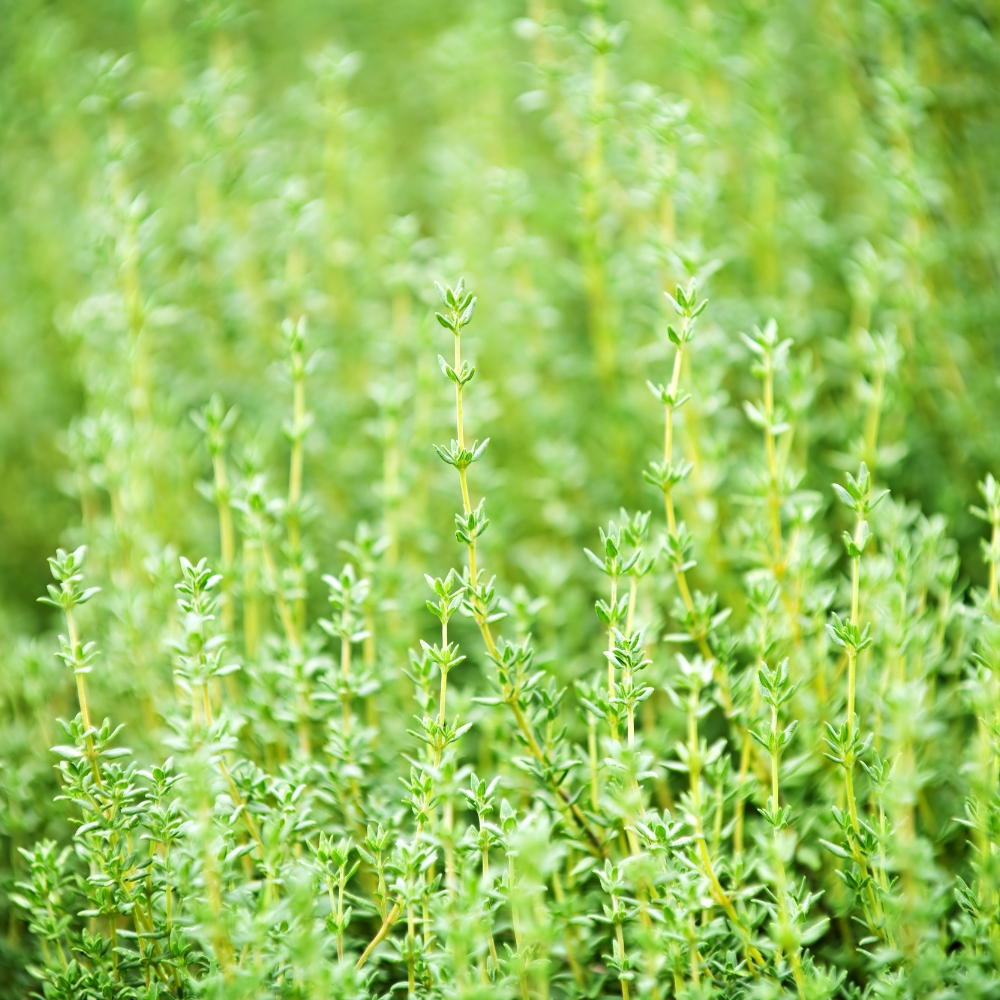Order by Phone: 260-525-9151 (M-F, 9am-4pm EDT)
-
Shop Plants
-
All Available Plants

-
Vegetable Plants

-
All Vegetable Plants for Sale

-
Most Popular Vegetables

-
Heirloom Vegetables

-
Hybrid Vegetables

-
Easy to Grow Vegetables

-
Fast Growing Vegetables

-
High Yield Vegetables

-
Cole Crop Plants

-
Indoor Vegetable Plants

-
Vegetables by Days to Harvest

-
Vegetables by Planting Zone

-
Vegetables for Kids

-
Amaranth Plants

-
Asparagus Plants

-
Bean Plants

-
Beet Plants

-
Broccoli Plants

-
Brussels Sprouts Plants

-
Cabbage Plants

-
Cantaloupe Plants

-
Carrot Plants

-
Cauliflower Plants

-
Celery Plants

-
Collard Greens Plants

-
Cucumber Plants

-
Eggplant Plants

-
Kale Plants

-
Lettuce Plants

-
Okra Plants

-
Pea Plants

-
Pepper Plants

-
Pumpkin Plants

-
Radish Plants

-
Rhubarb Plants

-
Spinach Plants

-
Squash Plants

-
Strawberry Plants

-
Sweet Corn Plants

-
Tomato Plants

-
Watermelon Plants

-
Archived Vegetables

-
Archived Amaranth Plants

-
Archived Asparagus Plants

-
Archived Broccoli Plants

-
Archived Cabbage Plants

-
Archived Cantaloupe Plants

-
Archived Carrot Plants

-
Archived Cauliflower Plants

-
Archived Celery Plants

-
Archived Cucumber Plants

-
Archived Eggplant Plants

-
Archived Kale Plants

-
Archived Lettuce Plants

-
Archived Hot Pepper Plants

-
Archived Sweet Pepper Plants

-
Archived Pumpkin Plants

-
Archived Spinach Plants

-
Archived Squash Plants

-
Archived Strawberry Plants

-
Archived Sweet Corn Plants

-
Archived Tomato Plants

-
Archived Watermelon Plants

-
Garlic

-
Gourd Plants

-
Kohlrabi Plants

-
Onion Plants

-
Potato Plants

-
Sweet Potato Plants

-
Swiss Chard Plants

-
Turnip Plants


-
Archived Amaranth Plants

-
All Vegetable Plants for Sale
-
Annual Plants

-
All Annual Plants for Sale

-
New Annuals for 2025

-
Most Popular Annuals

-
Alocasia (Elephant Ear)

-
Alternanthera (Joseph's Coat)

-
Asparagus Fern (Foxtail Fern)

-
Bacopa

-
Begonia

-
Bidens (Spanish Needles)

-
Bougainvillea (Paperflower)

-
Bracteantha (Strawflower)

-
Cajun Hibiscus (Tropical Hibiscus)

-
Caladium

-
Calibrachoa

-
Canna Lily

-
Catharanthus (Annual Vinca)

-
Cleome (Spider Flower)

-
Coleus

-
Cuphea

-
Dahlia

-
Diascia (Twinspur)

-
Dichondra

-
Fuchsia

-
Geranium

-
Gomphrena (Globe Amaranth)

-
Heliotrope

-
Impatiens

-
Ipomoea (Sweet Potato Vine)

-
Lantana

-
Lobularia (Sweet Alyssum)

-
Lophospermum (Creeping Gloxinia)

-
Mandevilla (Rocktrumpet)

-
Marigold

-
Ornamental Euphorbia (Baby's Breath)

-
Osteospermum (African Daisy)

-
Pericallis (Cineraria)

-
Petchoa

-
Petunia

-
Scaevola (Fan Flower)

-
Snapdragon

-
Strobilanthes

-
Sunflower

-
Torenia (Wishbone Flower)

-
Verbena

-
Zinnia

-
Annual Bulbs & Bare Roots

-
Annuals for Planters

-
Deer Resistant Annuals

-
Heat Tolerant Annuals

-
Part Shade Annuals

-
Part Sun Annual

-
Annuals by Flower Color

-
Annuals by Growth Habit

-
Kid Friendly Annuals

-
Archived Annuals

-
Archived Alocasia Plants

-
Archived Alternanthera Plants

-
Archived Bacopa Plants

-
Archived Begonia Plants

-
Archived Bidens Plants

-
Archived Caladium Plants

-
Archived Calibrachoa Plants

-
Archived Canna Lily Plants

-
Archived Catharanthus Plants

-
Archived Coleus Plants

-
Archived Cuphea Plants

-
Archived Gomphrena Plants

-
Archived Geranium Plants

-
Archived Fuchsia Plants

-
Archived Dichondra Plants

-
Archived Diascia Plants

-
Archived Dahlia Plants

-
Archived Lobularia Plants

-
Archived Heliotrope Plants

-
Archived Impatiens Plants

-
Archived Ipomoea Plants

-
Archived Lantana Plants

-
Archived Mandevilla Plants

-
Archived Marigold Plants

-
Archived Ornamental Euphorbia Plants

-
Archived Osteospermum Plants

-
Archived Pericallis Plants

-
Archived Petchoa Plants

-
Archived Petunia Plants

-
Archived Scaevola Plants

-
Archived Sunflower Plants

-
Archived Torenia Plants

-
Archived Verbena Plants

-
Archived Zinnia Plants

-
Archived Bougainvillea Plants

-
Archived Cajun Hibiscus Plants

-
Abutilon (Flowering Maple)

-
Amaranthus (Tassel Flower)

-
Angelonia (Summer Snapdragon)

-
Argyranthemum (Marguerite Daisy)

-
Cassia

-
Celosia (Cockscomb)

-
Colocasia

-
Cordyline

-
Dracaena (Spike Plant)

-
Dusty Miller (Silver Ragwort)

-
Dutchman's Pipe (Pelican Flower)

-
Fern

-
Gerbera Daisy

-
Hypoestes (Polka Dot )

-
Lobelia

-
Lotus Vine (Parrot's Beak)

-
Manettia (Candy Corn Vine)

-
Nemesia

-
Ornamental Cabbage

-
Ornamental Kale

-
Ornamental Pepper

-
Pansy (Viola)

-
Pentas (Star Flower)

-
Plectranthus (Swedish Ivy)

-
Pseuderanthemum

-
Senecio (Sea Cabbage)

-
Setcreasea (Wandering Jew)

-
Sweet Pea

-
Thunbergia (Black Eyed Susan Vine)

-
Vinca Vine (Periwinkle)


-
Archived Alocasia Plants

-
All Annual Plants for Sale
-
Perennial Plants

-
All Perennial Plants for Sale

-
New Perennials for 2025

-
Most Popular Perennials

-
Achillea (Yarrow)

-
Agastache (Hummingbird Mint)

-
Alcea (Hollyhock)

-
Aquilegia (Columbine)

-
Artemisia (Wormwood)

-
Asclepias (Milkweed)

-
Asters

-
Astilbe (False Spirea)

-
Baptisia (False Indigo)

-
Brunnera (Siberian Bugloss)

-
Centaurea (Cornflower)

-
Clematis

-
Coreopsis (Tickseed)

-
Delphinium (Larkspur)

-
Dianthus (Pinks)

-
Dicentra (Bleeding Heart)

-
Digitalis (Foxglove)

-
Echinacea (Coneflower)

-
Eupatorium (Joe-Pye Weed)

-
Gaillardia (Blanket Flower)

-
Gaura (Beeblossom)

-
Hardy Geranium (Cranesbill)

-
Hardy Hibiscus (Rose Mallow)

-
Heliopsis (False Sunflower)

-
Hemerocallis (Daylily)

-
Heuchera (Coral Bells)

-
Hosta (Plantain Lily)

-
Iris

-
Kniphofia (Red Hot Poker)

-
Lamium (Dead Nettle)

-
Leucanthemum (Shasta Daisy)

-
Liatris (Blazing Star)

-
Lilies

-
Lupine (Lupinus)

-
Mexican Flame Vine

-
Monarda (Bee Balm)

-
Nepeta (Catmint)

-
Ornamental Grasses

-
Papaver (Iceland Poppy)

-
Passiflora (Passion Flower)

-
Penstemon (Beardtongue)

-
Peony

-
Perovskia (Russian Sage)

-
Phlox

-
Platycodon (Balloon Flower)

-
Rudbeckia (Black Eyed Susan)

-
Salvia (Meadow Sage)

-
Scabiosa (Pincushion Flower)

-
Stachys (Lamb's Ear)

-
Verbascum (Mullein)

-
Veronica (Speedwell)

-
Low Maintenance Perennial Plants

-
Deer-Resistant Perennials

-
Part Shade Perennial Plants

-
Part Sun Perennial Plants

-
Perennials by Flower Color

-
Perennials by Bloom Time

-
Perennials by Zone

-
Perennial Bulbs

-
Archived Perennials

-
Archived Achillea Plants

-
Archived Agastache Plants

-
Archived Alcea Plants

-
Archived Aquilegia Plants

-
Archived Artemisia Plants

-
Archived Asclepias Plants

-
Archived Astilbe Plants

-
Archived Baptisia Plants

-
Archived Brunnera Plants

-
Archived Centaurea Plants

-
Archived Clematis Plants

-
Archived Coreopsis Plants

-
Archived Delphinium Plants

-
Archived Dianthus Plants

-
Archived Dicentra Plants

-
Archived Digitalis Plants

-
Archived Echinacea Plants

-
Archived Eupatorium Plants

-
Archived Gaillardia Plants

-
Archived Gaura Plants

-
Archived Hardy Geranium Plants

-
Archived Hardy Hibiscus Plants

-
Archived Hemerocallis Plants

-
Archived Heuchera Plants

-
Archived Hosta Plants

-
Archived Iris Plants

-
Archived Kniphofia Plants

-
Archived Lamium Plants

-
Archived Leucanthemum Plants

-
Archived Lily Plants

-
Archived Lupine Plants

-
Archived Monarda Plants

-
Archived Nepeta Plants

-
Archived Ornamental Grass Plants

-
Archived Papaver Plants

-
Archived Passiflora Plants

-
Archived Penstemon Plants

-
Archived Peony Plants

-
Archived Perovskia Plants

-
Archived Phlox Plants

-
Archived Platycodon Plants

-
Archived Rudbeckia Plants

-
Archived Salvia Plants

-
Archived Scabiosa Plants

-
Archived Stachys Plants

-
Archived Verbascum Plants

-
Archived Veronica Plants

-
Archived Aster Plants

-
Actaea (Baneberry)

-
Ajuga (Bugleweed)

-
Amsonia (Blue Star)

-
Armeria (Sea Thrift)

-
Athyrium (Lady Fern)

-
Bergenia (Pigsqueak)

-
Campanula (Bellflower)

-
Cestrum (Night-Blooming Jasmine)

-
Crocosmia (Coppertips)

-
Dicliptera (Uruguayan Firecracker)

-
Eryngium (Sea Holly)

-
Geum (Avens)

-
Helichrysum (Licorice Plant)

-
Helleborus (Lenten Rose)

-
Heucherella (Foamy Bells)

-
Ivy

-
Justicia (Shrimp Plant)

-
Lamiastrum (Yellow Archangel)

-
Peruvian Lily (Lily of the Incas)

-
Polemonium (Jacob's Ladder)

-
Primula (Primrose)

-
Ruellia (Mexican Petunia)

-
Scutellaria (Skullcap)

-
Sedum (Stonecrop)

-
Spigelia (Indian Pink)

-
Tiarella (Foam Flower)

-
Wisteria


-
Archived Achillea Plants

-
All Perennial Plants for Sale
-
Bushes and Shrubs

-
All Bushes & Shrubs for Sale

-
New Shrubs and Bushes for 2025

-
Most Popular Bushes & Shrubs

-
Abelia

-
Arborvitae (Thuja)

-
Aronia Berry (Chokeberry)

-
Bignonia (Crossvine)

-
Buddleia (Butterfly Bush)

-
Bush Cherry

-
Buxus Bushes (Boxwood)

-
Camellia

-
Caryopteris (Bluebeard)

-
Cephalanthus Bushes (Buttonbush)

-
Chaenomeles (Flowering Quince)

-
Chamaecyparis (False Cypress)

-
Coralberry

-
Deutzia

-
Distylium (Winter-hazel)

-
Dogwood Bushes (Red Twig)

-
Elaeagnus (Silverberry)

-
Elderberry (Sambucus)

-
Esperanza (Tecoma)

-
Forsythia (Golden Bell)

-
Goji Berry (Wolfberry)

-
Honeyberry (Haskap)

-
Hydrangea Bushes

-
Ilex (Holly)

-
Itea (Sweetspire)

-
Lagerstroemia (Crape Myrtle)

-
Lilac Bushes (Syringa)

-
Lonicera (Honeysuckle)

-
Physocarpus (Ninebark)

-
Potentilla Shrubs (Cinquefoils)

-
Rhamnus (Buckthorn)

-
Rhododendron

-
Rose Bushes

-
Rose of Sharon

-
Schizophragma (False Hydrangea-vine)

-
Spiraea

-
Summersweet Bushes

-
Viburnum Bushes

-
Weigela

-
Winterberry

-
Yew

-
Deer Resistant Shrubs

-
Evergreen Bushes and Shrubs

-
Low Maintenance Shrubs

-
Flowering Shrubs for Full Sun

-
Part Sun Shrubs

-
Shrubs for Small Gardens

-
Bushes & Shrubs by Flower Color

-
Spring Flowering Shrubs

-
Archived Bushes & Shrubs

-
Archived Abelia Plants

-
Archived Arborvitae Plants

-
Archived Buddleia Plants

-
Archived Buxus Plants

-
Archived Caryopteris Plants

-
Archived Chaenomeles Plants

-
Archived Chamaecyparis Plants

-
Archived Dogwood Plants

-
Archived Elderberry Plants

-
Archived Esperanza Plants

-
Archived Forsythia Plants

-
Archived Honeyberry Plants

-
Archived Hydrangea Plants

-
Archived Lagerstroemia Plants

-
Archived Lilac Bushes

-
Archived Lonicera Plants

-
Archived Physocarpus Plants

-
Archived Rhododendron Plants

-
Archived Rose Bushes

-
Archived Rose of Sharon Plants

-
Archived Spiraea Plants

-
Archived Viburnum Plants

-
Archived Weigela Plants

-
Acer Trees (Japanese Maple)

-
Aralia

-
Barberry Bushes

-
Calycanthus (Sweetshrub)

-
Cercis Trees (Redbud)

-
Daphne (Paradise)

-
Euonymus (Burning Bush)

-
Exochorda Bushes (Pearl Bush)

-
Juniper

-
Magnolia Trees

-
Osmanthus (Sweet Olive)

-
Phygelius (Cape Fuchsia)

-
Plumbago (Leadwort)

-
Porterweed


-
Archived Abelia Plants

-
All Bushes & Shrubs for Sale
-
Herb Plants

-
Flower Combos

-
Mum Plants

-
All Bulbs and Bare Roots

-
Proven Winners

-
Suntory Flowers

-
New Arrivals for 2025

-
Gift Certificates

-
The Forever Tomato Stake

-
Downloadable PDFs for Gardeners

-
Archived Plants


-
All Available Plants
- Plants By Purpose
- Plants By Style
- Plants From A-Z
- Best Sellers
- Sale
- Contact
- About Us
- My account
Glossary
Gardening Terms Explained: A Guide to Gardening Vocabulary
Soil Moisture Terms
- Moist - Soil that forms a ball when pressed but crumbles easily with gentle pressure. It is damp but not sticky, indicating an ideal moisture level for most plants.
- Dry - Soil that feels loose and flows through fingers, crumbling easily into a powdery texture. It lacks sufficient moisture and does not hold together well.
- Wet - Soil that is fully saturated with water, leaving little to no room for air. It feels sticky and cohesive when rolled, which can limit oxygen availability for roots.
- Well-Drained - Soil that drains excess water quickly, allowing air to reach plant roots and preventing waterlogging. Ideal for plants requiring moderate moisture without saturation.
Sunlight Exposure Terms
- Full Sun - A location that receives at least six hours of direct sunlight daily, ideally with some exposure during peak afternoon hours for optimal growth.
- Part Sun - A location that receives 4-6 hours of direct sunlight daily, with some tolerance for afternoon sun exposure.
- Part Shade - A location that receives 3-6 hours of direct sunlight daily but requires protection from intense afternoon sun.
- Full Shade - A location that receives less than 3 hours of direct sunlight or filtered light throughout the day.
Plant Growth Habit Terms
- Mounded - Mounded plants have thick, upright stems that spread outward and upward, forming clumps or mounds. This habit is valued in landscape design for its full, rounded appearance. Plants with mounded growth also tend to produce more flowers than other types of plants.
- Upright - Upright plants grow primarily vertically with minimal lateral branching, creating a columnar shape often used as accents or structural elements in garden design.
- Spreading - Spreading plants grow outward and downward, covering large areas. They are ideal for ground cover and erosion control, offering a natural, expansive appearance.
- Climbing - Climbing plants use specialized shoots, tendrils, or leaf stalks to attach to supports such as stems, wires, or poles, allowing vertical growth. Some may need guidance to establish direction, and they are often used as focal points in gardens, as their climbing growth draws the eye upwards and adds visual interest.
- Vining - Vining plants lack specialized climbing structures and instead use long shoots to drape over supports. With maturity, these plants can eventually climb a suitable support with minimal input from the gardener. Vining plants are often used as a backdrop for other plants and to cover chain link fences or walls, adding visual interest to a garden.
- Semi-Trailing - Semi-trailing plants have a restrained trailing habit, with stems reaching up to 2 feet, making them well-suited for use in container gardens and other small spaces to add a cascading effect to hanging baskets and window boxes.
- Trailing - Trailing plants have long, tendril-like growth, often extending up to 4 feet. Their cascading growth is popular in containers and hanging baskets for added visual impact.
- Sprawling - Sprawling plants have a low, spreading growth habit, rather than a upright or vertical form. This type of habit is common in ground cover plants.
Soil Type Terms
- Clay - Clay soil contains a high proportion of fine clay particles, offering high water retention and nutrient capacity, but can become compacted and restrict root growth. To improve clay soil: (1) add organic matter like compost, manure, or leaves to improve drainage; (2) aerate the soil or add gypsum to break up clay particles; and (3) incorporate sand to enhance structure and reduce clay density.
- Silt - Silt consists of fine particles between sand and clay in size, holding moisture well and contributing to soil structure when mixed with other soil types.
- Loam - Silt consists of fine particles between sand and clay in size, holding moisture well and contributing to soil structure when mixed with other soil types.
- Sandy - Sandy soil is made up of large, coarse particles that drain quickly but lack nutrient retention, requiring more frequent watering and fertilization. To improve sandy soil: (1) add organic matter like compost or leaves to enhance water retention and nutrient levels; (2) apply mulch to retain moisture and add nutrients; and (3) incorporate clay to balance composition and improve drainage.
- Salty - Salty soil has high salt concentrations, often due to irrigation or nearby saline environments, leading to poor plant growth by affecting water absorption. To reduce soil salinity: (1) remove salt-laden topsoil and replace with fresh, non-salty soil; (2) add organic matter to absorb excess salt; (3) apply gypsum to replace sodium with calcium, making it less harmful to plants; and (4) irrigate with fresh, non-saline water to flush out salts.
Plant Type Terms
- Heirloom - An heirloom plant variety is one that has been preserved and passed down through generations, maintaining its original characteristics. Heirlooms are open-pollinated, meaning they can be replanted each year while retaining unique traits, such as specific flavors or appearances that are sometimes diminished in hybrids.
- Hybrid - A hybrid plant results from cross-pollinating two distinct varieties within the same species to produce desired traits from each parent plant, such as disease resistance or improved yield. Many hybrids are sterile, meaning they cannot produce viable seeds and may require propagation by other methods.
- Open-Pollinated - An open-pollinated plant is pollinated naturally by wind, insects, or animals. These plants produce seeds that retain the parent plant's genetic traits, allowing for consistent replanting without genetic alteration.
- Evergreen - An evergreen plant retains its foliage year-round, adapting to various climates to continue photosynthesis and growth during winter. They add year-round color to gardens and are often crucial for wildlife habitat.
- Bare Root - A bare root plant is sold without soil, typically during dormancy. The roots are kept moist during transport, and prompt planting is required to prevent dehydration. Bare roots establish quickly with proper care.
- Bulb - A bare root plant is sold without soil, typically during dormancy. The roots are kept moist during transport, and prompt planting is required to prevent dehydration. Bare roots establish quickly with proper care.
Production Time Terms
- Short Season (Determinate) - A short season (determinate) plant grows to a set size, then stops and produces its entire fruit crop over a 2-4 week period. These plants require less pruning and are ideal for canning and preserving due to their concentrated harvest.
- Long Season (Indeterminate) - A long season (indeterminate) plant continues growing and branching throughout the season, producing fruit continuously until killed by frost. Indeterminate plants require more upkeep but offer multiple harvests over time, making them suitable for large or long-season gardens.
Gardening Season Terms
- Early Spring - Includes March and April, or sometimes February in warmer areas. It's a prime time for preparing soil, planting hardy vegetables like broccoli and kale, and pruning shrubs and trees.
- Mid Spring - Includes April and May, sometimes starting in March in warmer areas. This period is ideal for planting warm-season vegetables like tomatoes and peppers as the soil warms.
- Late Spring - Includes April, May, and sometimes June. This is an optimal time to plant summer vegetables such as corn and cucumbers, and to begin adding summer-blooming flowers like zinnias.
- Early Summer - Includes June and July, when gardeners focus on watering, fertilizing, and enjoying early blooms while managing weeds and pests.
- Mid Summer - Includes July and August, and is the time to tend to established plants, harvest early vegetables, and start fall plantings for a continued growing season.
- Late Summer - Includes August and September, and is the period for continued vegetable harvests and planting late-blooming flowers. It's also an ideal time to prepare for fall with bulbs and perennials.
- Fall - Includes September, October, and November, and is the season for harvesting the last of your vegetables, planting fall bulbs for spring blooms, and cleaning up the garden.
Our Company
Customer service

© 2025 GrowJoy™. All rights are reserved. | Conditions of Use | Privacy Statement
Where Are You Shipping To?
State:
Zip Code:












































































































































































































